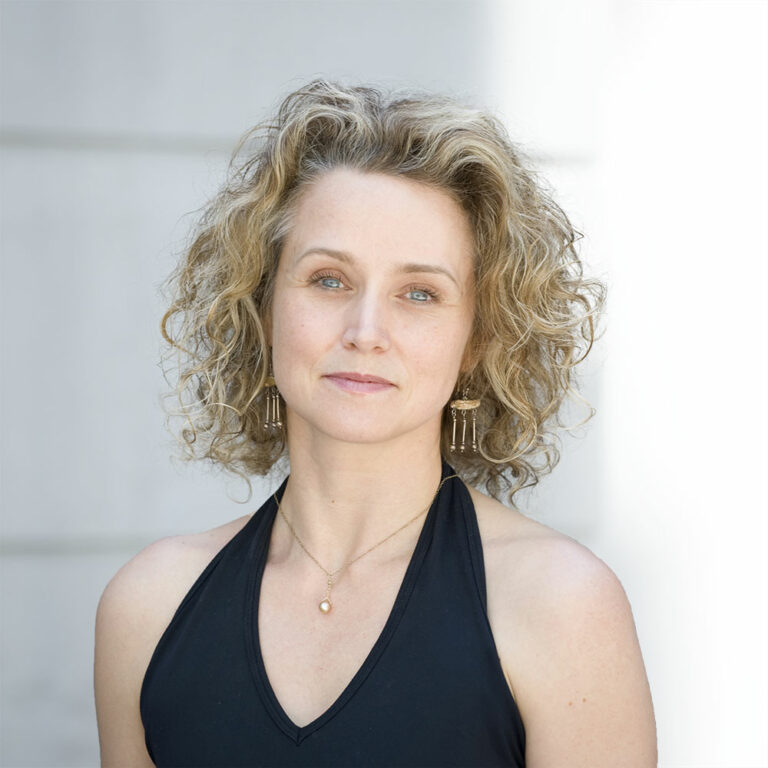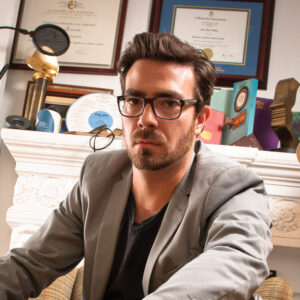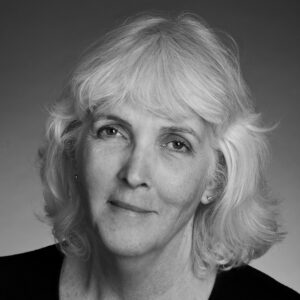Anick La Bissonnière
Laureate, 2015
Image: Name, Title, Description
01
2015 Laureate
Following her training as an architect in Switzerland and Montréal, Anick La Bissonnière has created close to a hundred designs for theatre on the major international, Canadian and Montréal stages and for multiple types of productions, including theatre, opera and circus. Her set designs have been produced on such renowned stages as the Théâtre du Châtelet in Paris, the Festival d’Avignon, New York’s Brooklyn Academy of Music and the Teatro Colon in Buenos Aires. According to the jury, “La Bissonnière’s early training as an architect brings a sophisticated sculptural beauty to her set designs. Often epic in scope, her work is both eye-popping and emotionally powerful. She has worked with dozens of influential Canadian directors including André Brassard, Gilles Maheu, Matthew Jocelyn and her ongoing collaborator, Siminovitch Prize laureate, Brigitte Haentjens.”
Her work earned her a highly prestigious recognition at the Quadriennale internationale de scénographie in Prague in 2007 and the Critic’s Prize (ACMA Award) in Argentina in 2015. Since 2010, she has been sharing her knowledge in design with students at Université du Québec à Montréal. She has also played a role in the conception and building of scores of performance spaces all across the country. Her triple journey as a designer, architect and teacher has placed her in a unique position in the world of contemporary theatre, making her a formidable technician, a gifted communicator, a tireless researcher but especially, a complete, sensitive artist, one with a remarkable creative
Acceptance Speech
I love theatres.
They have a special smell; the air is thicker, the silence is deeper.
Nothing is more intoxicating for me than to sit in an empty theatre and to sense all the emotions, past and future, that might live there.
Theatres are haunted, everyone knows that.
I love theatres and I always have.
The origins of this unconditional love are not clear in my memory.
I have a distant recollection of one afternoon, sitting in Le Théâtre du Rideau Vert, watching a performance of Gulliver’s Travels. I must have been about five, no more.
Much later, there I am in a school outing at La Nouvelle compagnie théâtrale, to see an amazing production of Britannicus for which I can still describe the sets and costumes for you.
Throughout my school years, theatre was always part of my life. In fact, I must admit there are some years for which I have almost no memories of my classes! It was clear to me that I had to be in a theatre. I acted, I wrote, I did the sets, like we do in any amateur troupe, and I continued to be involved right up until starting university.
Until, that is, I met architecture.
It wasn’t love at first sight; far from it.
I was very young, barely an adult, when I was admitted to university.
I had chosen architecture because it was a “real profession,” and because I had been accepted into a program that had a reputation for being highly selective. Architecture also had the advantage of combining art and science, history and technology. In short, studying architecture struck me as being a fabulous introduction to the world.
But the penny didn’t really drop until my third year.
I spent that year in a university exchange program at L’École polytechnique fédérale in Lausanne, Switzerland.
And I got a real cultural shock.
When I phoned my father to tell him I had survived my first flight and first train ride, I candidly declared to him, “It’s exactly like chez nous but everything is different.”
I had just discovered what culture was.
I spent two years studying in Europe, travelling and finally working in Paris at the beginning of the nineties, at a time when western architecture went through an important transformation.
I had occasion to visit hundreds of places and buildings that I only knew theoretically.
And I made a friend for life: Éric-Olivier Lacroix who remains to this day my most precious and irreplaceable collaborator.
I went to Egypt to visit the temples where the walls are covered with hieroglyphs: walls that speak, ingeniously lit by openings in the ceiling that project the light along precisely calculated paths.
To touch the stones that make up these giant constructions, for which we still wonder “how could they have been cut with such precision so many thousands of years ago,” makes for an extraordinary experience whose effect was to render me forever humble before the genius of humankind.
With my hands on those stones, I could feel the passage of time, the effort they required, and I was moved by their mere presence, mute and invisible, of those who had raised them into place.
I learned that buildings, even if they are small and not the least spectacular, contain within them all the energy and the very presence of those who built them.
It is difficult to describe this way of seeing the world that has never left me since.
When I returned to Montréal, two years later, I would walk along rue Ste-Catherine and discover an environment that I had never seen.
Everything seemed different to me, the width of the streets, the buildings, the light.
I looked at the city where I was born with brand new eyes.
I returned to the Université de Montréal to complete my final year armed with baggage that was very different from that of my fellow students.
It was then that I decided to attend the “Architecture Urbaine” workshop founded by Melvin Charney. In those days, Charney was interested in the metaphorical construction of cities and his model for the ensemble of his proposition was the theatre.
Taking inspiration from Shakespeare’s famous line “All the world’s a stage,” in his workshop the back alleys of Montréal became scenes of everyday life, the facades were masques on the street parades and the balconies mirrored those of the great operas.
I had the extraordinary good fortune of meeting one of Melvin’s assistants at the time, Alan Knight, who today is a professor in architecture at the Université de Montréal, and who delivered me into the world of creativity. This erudite man, so patient and generous, supervised my work all through my final year without ever inhibiting my imagination, while encouraging me to represent the world as I perceived it.
He saw something in me that I had never suspected.
He supported me in the conception of an urban stage design project, a kind of open-air scenography in bricks and steel, an audacious approach in a school of architecture where one is expected to see buildings with a clearly defined end use.
As it happened, not only did my project offer none of this, the majority of my plates were made up of drawings done by hand with coloured pencils.
(Which prompted my brother to say that my working space looked more like a kindergarten than a university!)
What my tutor had allowed me to do was hardly typical for the time: he had encouraged me to “live” the space that I imagined, to conceive of it at the eye level of a spectator rather than to render it abstract through the usual sections and plans. That, combined with my travel experience, has laid out the path for everything I have done since.
At the graduation ceremony, Alan predicted that I would be revisiting this project all my life.
And he was right.
What I learned under his benevolent guidance, inhabits me still.
Every day that I teach, he remains the professor whom I would wish to resemble.
I shall be eternally in his debt.
Before I was 25, I was admitted to the Order of Architects and enrolled in the training program run by the celebrated Montréal theatre company, Mime Omnibus. The training at Omnibus draws on that of French actor and teacher, Étienne Decroux, for whom the expression of the body within space is the essence of his art. There I found not only a technique that sharpened my consciousness of the body, but, especially, my first designing job.
The Artistic Director of Mime Omnibus, Jean Asselin, who knew of my profession, asked me if I would be interested in conceiving a theatrical design, urging me to read the play and to make him a proposal.
I just couldn’t believe my luck.
The play was about an imaginary meeting between Voltaire and Rousseau, which I set in a space that I knew well: the city. What other place than a city for this encounter between Culture and Nature, of which these two philosophers were the incarnation. The salon bourgeois where the two protagonists met was thus made up of miniature buildings, the bookshelves became Montréal triplexes, Voltaire’s study, a concrete parking garage.
Never discouraged by my somewhat surprising proposition, Jean and the entire team at l’Espace Go supported and encouraged me. They allowed me to realize a project that resembled me without ever demanding that I conform to the slightest convention.
Following that, Jean called on me for many other projects, allowing me to build a portfolio which in turn opened up numerous collaborations with other directors.
For his generosity and especially for having agreed to be “thrown off” by unusual proposals, Jean Asselin gets all my gratitude.
He allowed me to discover scenography.
For the first ten years of my professional life, I worked as a scenographer, I began teaching and I continued to work freelance in architectural firms. I was then part of a team that was solely devoted to designing performing arts spaces, an unbelievable bit of luck for someone who, at the same time, was designing shows for those same spaces.
I was involved in the design of some fifty theatres of all sizes and shapes, I took part in competitions, did the analyses, came to understand the needs of every element of a theatre and, in short, grew to know such buildings from top to bottom.
Then, in 1999, Brigitte Haentjens called me.
Brigitte, whose name I knew for having seen her work, offered me, for our first collaboration, the most prestigious stage in Montréal, le Théâtre du Nouveau Monde. And our relationship has only grown since. Although I continue to work with other directors and on all manner of projects, my work with Brigitte remains a guiding light in the ensemble of my activity. She has allowed me to grow as an artist, to broaden my thinking beyond the constructed, but especially to engage in an artistic conversation over a long period of time.
Brigitte and I are two very different beings, but we are complementary and complicit at the same time. I admire her energy, her intelligence and lucidity, and her intransigence in the creative process. We have built a universe that expands with each project we undertake.
I was thrilled to see her receive the Siminovitch Prize in 2007 because, for me, she is without a doubt a great artist.
Part of the honour granted me tonight is in no small way thanks to her and I would like to think it is a celebration not only of the ensemble of my work but also of the extraordinary relationship I cherish with her.
Since 1993, I have designed almost one hundred spaces in which I have had the privilege of watching formidable actors perform. I have been moved by their performances but also by the collegial atmosphere that reigns in a theatre project. Without the boundless generosity of the collaborators whom I’ve had the privilege of meeting (production and technical directors, lighting, costume and prop designers, technicians, carpenters, painters and many more), I would not be standing before you now.
Nothing that I’ve imagined would have come to pass without their efforts so I would like to pay tribute here by sharing with them the honour that is given to me.
I found a poetic expression in scenography, which consequently means my own sensibilities are exposed. I would like to think it is that aspect of my work that inspired the jury. I am deeply touched by the awarding of the Siminovitch Prize, not only because it is unique, prestigious and irreplaceable, but also because it highlights an artistic research that has been developed in the course of time. It is not a recognition destined for newcomers, nor is it an end-of-career honour. It is granted to someone who is still immersed in those fundamental questions about his or her art but who has enough experience to delve deeper into them. It is a way of recognizing accomplishments thus far but also an enormous encouragement to carry on.
In my case, it could not have come at a better time.
After four nominations to the short list, I realised that almost the entirety of my work over the past 23 years has been recognised by the Siminovitch jury. That in itself, I thought, was quite an accomplishment. Upon hearing Monsieur White tell me I was the winner, I was speechless for a long moment. Especially since the finalists are all such highly accomplished artists.
I am truly honoured to share this list with Bretta, Trevor and Nancy, who merit our admiration for their devotion to their art and their exceptional talent.
It is a joy for me to share my good fortune tonight with my father (who’s celebrating tonight his 75th birthday), my mother and my brother, all of whom, in their own way have always demonstrated their belief in me and without whom I could not begin to pretend to be the person I am. Your presence here goes straight to my heart and you are always with me. I owe to mon amoureux the fact my name was submitted “for the last time!” as, clearly, without him I would not be standing here now. Thank you, Jeff, for having always believed that someday I could be the chosen one. I would also like to mention the generosity of Jean-Marc Dalpé, Matthew Jocelyn, Frédéric Dubois, Paul Savoie, Véronique Borboën as well as Brigitte Haentjens, who agreed to write support letters for me. Your beautiful words have moved me greatly.
Thank you to the Siminovitch family and especially to Lou who had the grace to create this award in honour of Elinore. I see in it a gesture of admiration and love and I am delighted to benefit tonight from such a beautiful display of romance. Thank you to the donors, members of the board and to RBC, who contribute to the enduring life of this incomparable heritage and to place art in such a glowing light. I would hope that our leaders are inspired by your generosity and your love for the performing arts. I am living proof that contact with the arts at an early age, with travel, with the meeting of cultures and with higher education can allow a shy, imperfect, sometimes terrified individual to blossom within her society.
I work with space. An intangible, indecipherable thing that remains after we remove the walls, according to a Greek philosopher. It’s an invisible material that unites us all, from which none can escape. It’s the element that makes the theatrical performance a rare experience because it can only be lived in a common and shared space. Be it constructed or virtual, scenography is the art which explores our spatial relationship with our environment. Over time and many projects, I learned that my true creative space resides in the audience’s imagination and the body of the actors: it’s at once a spiritual construction and a practical landscape. It must allow one to enter into a resonance with the actions, the emotions and the words that carry them. In this way, the theatre for me is an architectural laboratory without equal, one in which our today’s world should show a greater interest.
On the eve of an important election, I allow myself to dream tonight, that I will awaken tomorrow in a world where art and knowledge enjoy a place of privilege. A world that builds liberty, creativity, desire and, why not, while we’re at it, poetry.
The most extraordinary aspect of receiving the Siminovitch Prize is to be able to give some incredible news to someone who has asked for nothing. To have the chance to publicly celebrate an emerging talent and to encourage that person to carry on is a rare privilege. And all the more so since conditions for production today are increasingly difficult for young designers. I have selected a young woman whom I met on a project where we were collaborating and in whom I saw a bit of myself in her passion for creation. She trained in design, then did a Master’s in visual arts, which shows in the way she approaches her work. I was struck by her sharp mind, her creativity and her generosity. Inventive and ingenious in theatre, dance and the circus, she is a devoted and complete artist. Mesdames et messieurs, it gives me great pleasure to introduce to you, Madame Marilène Bastien.
2015 Protégé
02
Simi News
Subscribe today to the monthly e-newsletter.
> Be the first to know about current artistic projects of the Siminovitch Prize community.
> Learn about emerging artists who are shaping the future of Canadian theatre.
> Stay informed about upcoming opportunities and calls for nominations.




